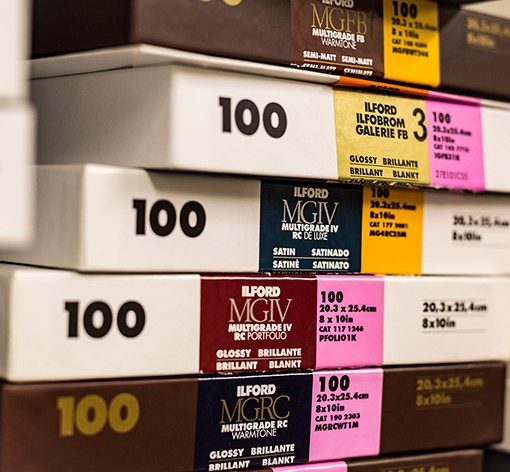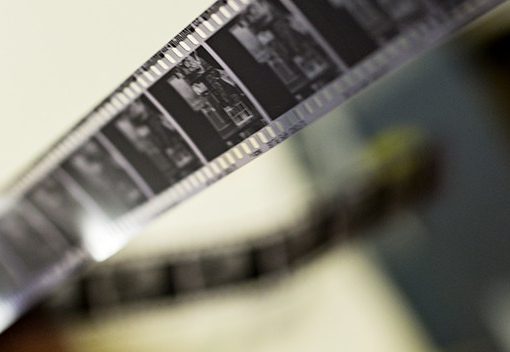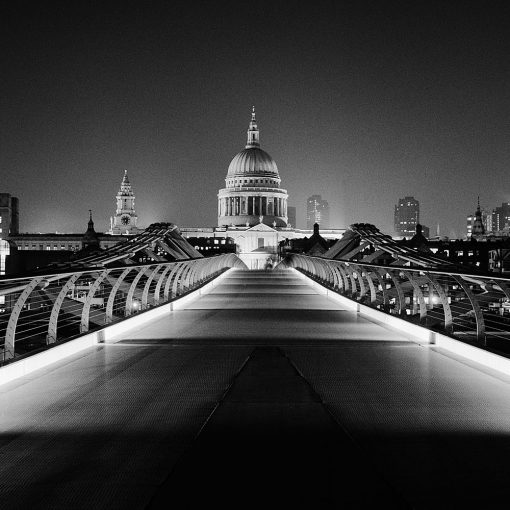TESTING YOUR SAFELIGHTS
Safelights are an essential component in any darkroom set up. We recommend testing them annually, as ageing can change the transmission characteristics of the filters. This can cause visible fogging of the print or, more likely, a subtle but noticeable drop in contrast.
When setting up your safelights always read the instructions and don’t exceed the recommended bulb wattage. Fitting a brighter bulb or mounting your safelight too close to your developing dishes, may cause degraded highlights on your prints due to safelight fogging.
FOLLOW THE PROCEDURE BELOW, TO ENSURE THAT YOUR SAFELIGHTS REALLY ARE SAFE
- With all the safelights switched off, make a series of test exposures without a negative in the enlarger. From this, determine the level of exposure needed to produce a pale grey tone on your printing paper.
- Leaving the safelights off, expose the right half of the paper using the exposure determined at step 1. Make a notch in the middle of the sheet, so that you know which way up to orient it.
- Still in total darkness take the exposed paper to the part of the darkroom where the safelighting is brightest. Cover about 1/4 of the paper with a piece of card, then turn on the safelight and make a series of exposures. We’d suggest 2, 4 and 8 minutes, progressively covering more and more of the paper.
- Turn off all safelights again, and return to the enlarger. Now expose the left-hand side of the paper using the exposure determined at step 1. Use the notch in the paper to make sure that this exposure does not overlap that made at step 2. Process the test in darkness.
CHECKING YOUR RESULTS
- If safelighting is satisfactory, your test will show two flat grey panels. The test is very sensitive, so you can safely ignore small changes in density. However, if there is a large difference in density across the right-hand panel, then safelight fogging after exposure is causing problems. If the left-hand panel is not even, then fogging before exposure is compromising print quality.
- If the maximum “safe” period is shorter than the time the material would normally be exposed to safelighting, then you must change your safelight arrangements. This may mean reducing the power of the bulbs, or moving the lamps farther from the paper. If the safelight filters are old, they may be faded and you should consider replacing them.




